No products in the cart.
Categories
My Publication
Shopping cart (0)
Subtotal: ₹0.00
Spend ₹2,000.00 to get free shipping
Congratulations! You've got free shipping.
₹325.00 Original price was: ₹325.00.₹305.00Current price is: ₹305.00.
This textbook offers a thorough introduction to fundamental chemistry concepts and quantitative analysis, tailored for B.Sc. 1st Semester students. It combines theoretical understanding with practical applications, making it an ideal resource for building a solid foundation in chemistry.
78 Students are viewing this books right now
🚚 Shipping Rates & Delivery Dates: See at Checkout!
शिपिंग दरें और डिलीवरी की तारीखें: चेकआउट पर देखें!
🎉 Special Offers on Books: Explore at Checkout!
📚 किताबों पर विशेष ऑफर: चेकआउट पर देखें!
💳 Pay Prepaid & Get Extra 5% Off!
प्रीपेड भुगतान करें और अतिरिक्त 5% छूट पाएं!
🛒 Shop All Books Now!
🛒 सभी किताबें अभी खरीदें!
🚚 Shipping Rates & Delivery Dates: See at Checkout!
शिपिंग दरें और डिलीवरी की तारीखें: चेकआउट पर देखें!
🎉 Special Offers on Books: Explore at Checkout!
📚 किताबों पर विशेष ऑफर: चेकआउट पर देखें!
💳 Pay Prepaid & Get Extra 5% Off!
प्रीपेड भुगतान करें और अतिरिक्त 5% छूट पाएं!
🛒 Shop All Books Now!
🛒 सभी किताबें अभी खरीदें!
Your Payment is 100% Secure
| Weight | 0.400 kg |
|---|---|
| Dimensions | 15 × 1.5 × 24 cm |
| Types Of Book | Paperback |
| Subject Of Book | Chemistry (Theory &Practical Book) |
| No. Of Pages | 356 Pg. |
| Auther | Md. Rashid Tanveer (St. Andrew's P.G. College, GKP, UP). |
| Class Of Book | B.Sc. 1St Year 1st Sem. |
| Language Of Book | English |
Author: Md. Rashid Tanveer (St. Andrew’s P.G. College, GKP, UP)
Atresh Kumar Singh (D.D.U. Gorakhpur University, GKP)
ISBN: 978-81-956677-4-1
Pages: 356
Subject: Chemistry
Class: B.Sc. 1st Semester
This textbook offers a thorough introduction to fundamental chemistry concepts and quantitative analysis, tailored for B.Sc. 1st Semester students. It combines theoretical understanding with practical applications, making it an ideal resource for building a solid foundation in chemistry.
Contents:
SECTION A [Fundamentals of Chemistry (Theory)]
1- Molecular Polarity and Weak Chemical Forces
- Resonance
– Formal Charge
– Dipole Moment
– Polarizing Power and Polarizability
– Hydrogen Bond
– Van der Waals’ Force
– Repulsive Forces
– Lattice Energy
– Short Questions with Answers
– Exercises
– Multiple Choice Questions
2. Simple Bonding Theories of Molecules
– Atomic Orbitals
– Aufbau Principle
– Multiple Bonds (Sigma (σ) and Pi (π) Bonds)
– Bond Length
– Valence Bond Theory (Heitler-London Approach)
– Hybridization
– Geometry of Molecules
– Valence Shell Electron Pair Repulsion (VSEPR) Theory
– Molecular Orbital Theory
– Comparison of Valence Bond and Molecular Orbital Theory
– Short Questions with Answers
– Exercises
– Multiple Choice Questions
3. Periodic Properties of Atoms [with reference to s and p block]
– Modern Periodic Law
– Modern Long or Extended Form of the Periodic Table
– Periodicity
– Periodic Trends in Properties
– Effective Nuclear Charge
– Atomic Radii (Size of Atom)
– Ionization Enthalpy or Ionization Energy
– Electron Affinity or Electron Gain Enthalpy
– Electronegativity
– Short Questions with Answers
– Exercises
– Multiple Choice Questions
4. Recapitulation of Basics of Organic Chemistry
– Hybridization
– Bond Length
– Bond Angles
– Bond Energy
– Localized and Delocalized Bonds
– Van der Waals Interactions
– Inclusion Compounds and Clathrates
– Charge Transfer Complexes
– Hyperconjugation
– Dipole Moment
– Electron Displacement in a Molecule
– Short Questions with Answers
– Exercises
– Multiple Choice Questions
5. Mechanism of Organic Reactions
– Arrow Notations in Organic Reactions
– Nature of Fission of Covalent Bond
– Types of Reagents
– Types of Organic Reactions
– Reactivity Rates of Reaction and Energy Profile
– Reactive Intermediates
– Assigning Formal Charges on Intermediates and Other Ionic Species – Average Electron Theory
– Methods of Determining Reaction Mechanism
– Short Questions with Answers
– Exercises
– Multiple Choice Questions
6. Stereochemistry
– Concept of Isomerism
– Structural Isomerism
– Stereoism
– Optical Isomerism
– Geometrical Isomerism
– Geometrical Isomerism in Alicyclic Compounds
– Determination of Configuration of Oximes
– Cycloalkanes and Their Relative Stability
– Conformational Isomerism
– Energy Diagrams of Cyclohexanes
– Difference Between Configurational and Conformational Isomers
– Fischer Projection, Newman and Sawhorse Projection Formulae
– Short Questions with Answers
– Exercises
– Multiple Choice Questions
7. Basic Computer
– Introduction
– Types of Computers
– Components of Computer
– Hardware and Software
– Operating System
– Number System
– BCD Code
– ASCII
– Constant
– Variable
– Introduction to Software Languages
– Internet
– Software Products
– Short Questions with Answers
– Exercises
– Multiple Choice Questions
8. Acid-Base Concept
– Bronsted-Lowry Concept of Acids and Bases
– Lewis Concept
– Hard and Soft Acids and Bases (HSAB)
– Short Questions with Answers
– Exercises
– Multiple Choice Questions
9. Environmental Chemistry
– Introduction
– The Earth’s Atmosphere
– Environmental Pollution
– Types of Pollution
– Air Pollution
– Water Pollution
– Soil Pollution
– Greenhouse Effect
– Acid Rains
– Ozone Layer
– Exercises
– Multiple Choice Questions
SECTION B [Quantitative Analysis (Practical)]
1. Water Quality Analysis
2. Estimation of Metal Ions
3. Estimation of Acid and Alkali Contents
4. Estimation of Inorganic Salts and Hydrated Water
Be the first to review “Fundamentals Of Chemistry And Quantitative Analysis 1st Sem. Kanha” Cancel reply
Related products
Sale
Physics-5th Sem. Classical And Statistical Mechanics Pragati
🔥 4 items sold in last 7 days
Sale
Group And Ring Theory Part-A Ramprasad
🔥 6 items sold in last 7 days
Sale
Organic Synthesis Part-A B.Sc. Third Year 5th Sem. Ramprasad
🔥 5 items sold in last 7 days
Sale
Mathematical Methods For B.Sc. 3rd Sem.Kanha
🔥 7 items sold in last 7 days
Sale
Solid State and Nuclear Physics (B.Sc. Sem-VI)
🔥 4 items sold in last 7 days
You may add any content here from XStore Control Panel->Sales booster->Request a quote->Ask a question notification
At sem a enim eu vulputate nullam convallis Iaculis vitae odio faucibus adipiscing urna.
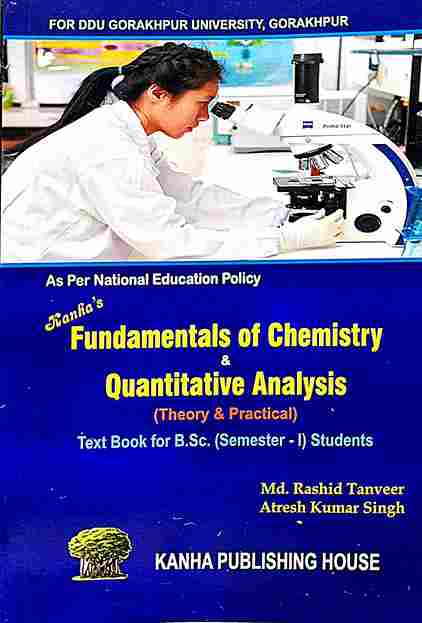
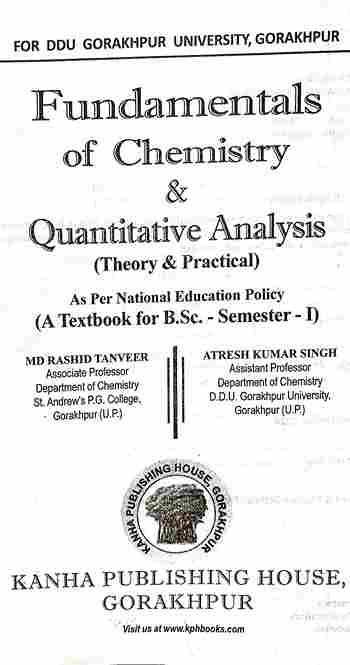



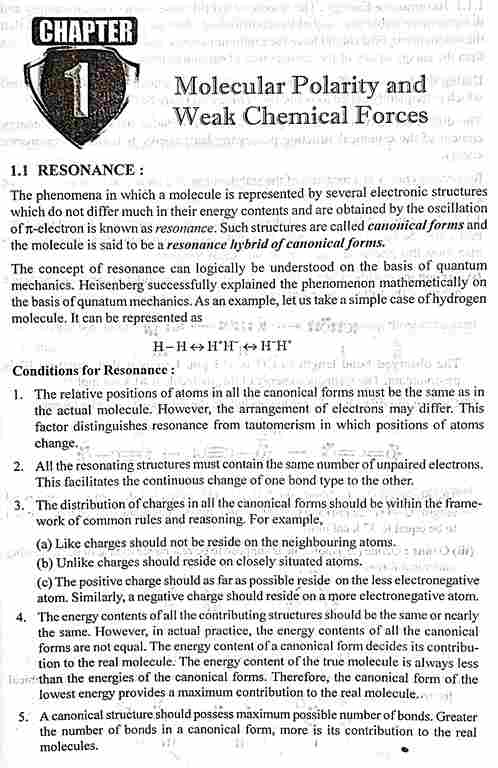

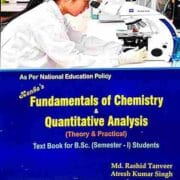
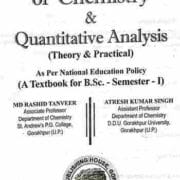
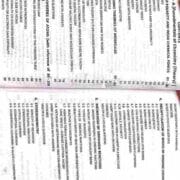




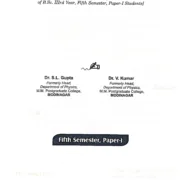
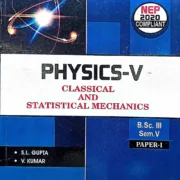
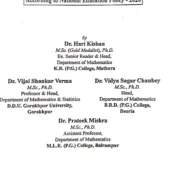

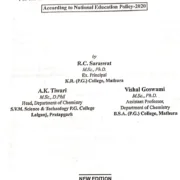
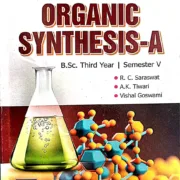
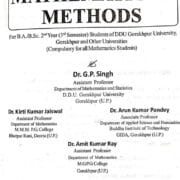
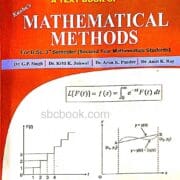

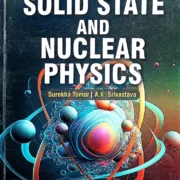


Reviews
There are no reviews yet.